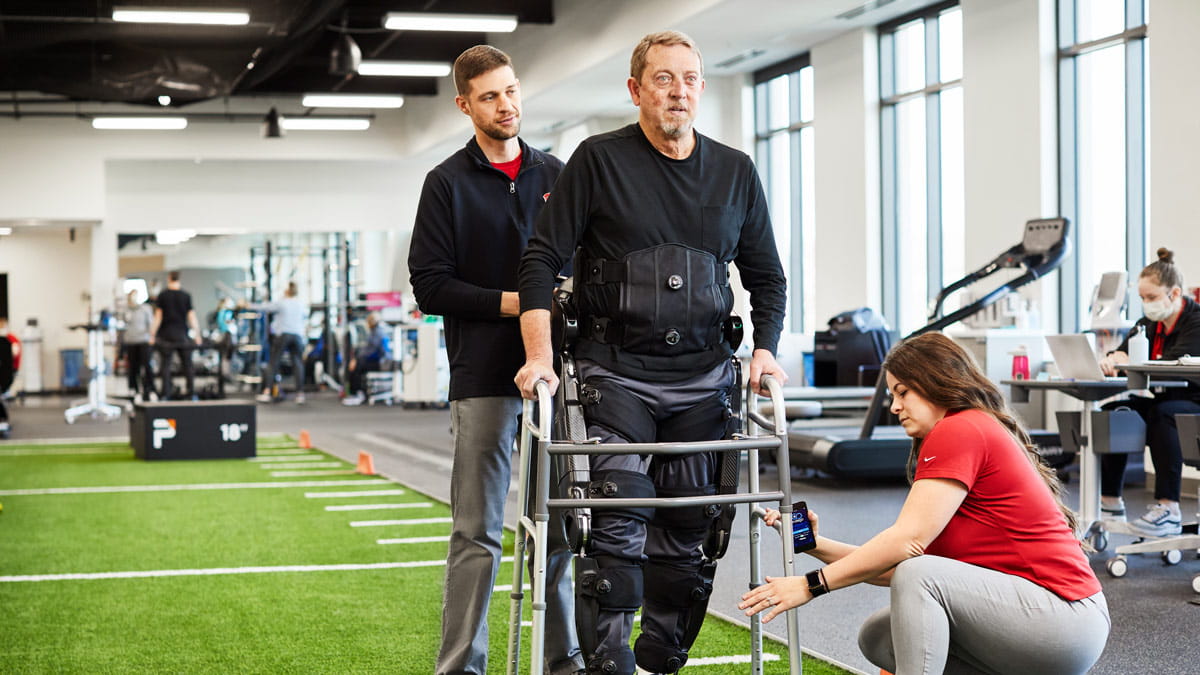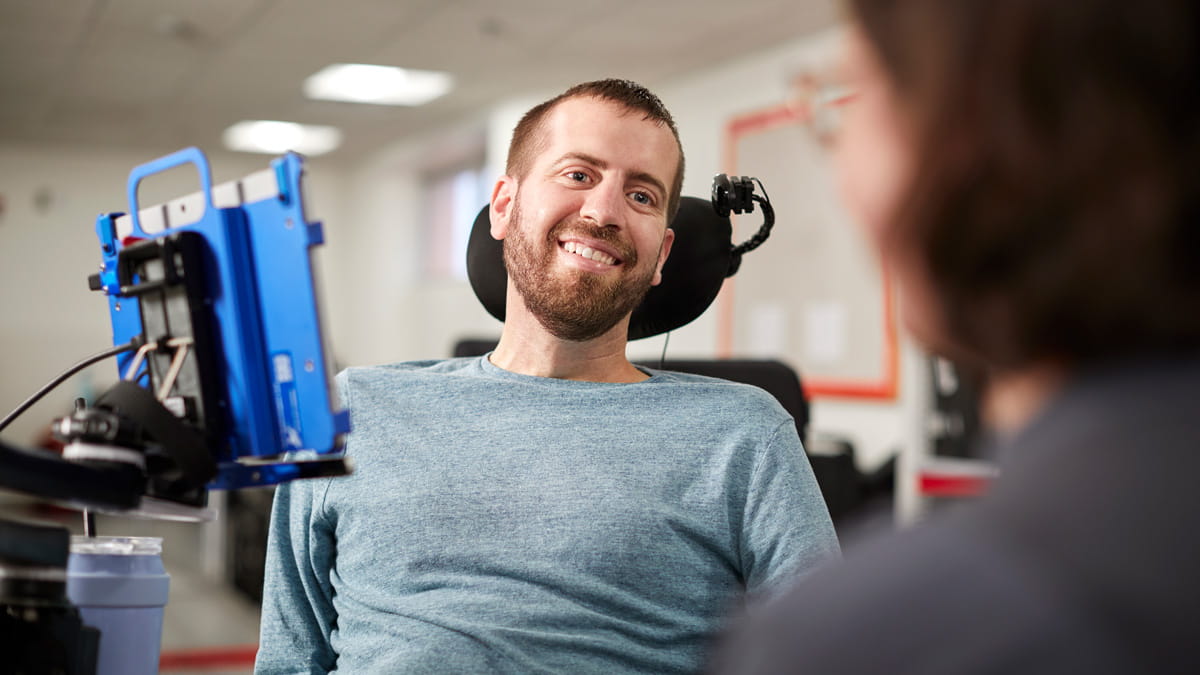Determined not to let this disease change who he is
Tim Rhode, living with multiple sclerosis

In the first few years after a neurologist told Tim Rhode he had multiple sclerosis (MS), he pictured himself in a wheelchair.
He’d have to retire early, he figured. Maybe he’d miss out on seeing his son and daughter grow up or knowing grandchildren.
Then as he saw others with MS, some in wheelchairs, he got motivated to do whatever he could. “I don’t want this damn disease to change who I am,” he says.
In a lot of ways, it hasn’t. Physical therapy and medication have significantly slowed the effects of MS, which causes the immune system to strip the protective cover on nerves in the brain and spinal column. Tim still works full time, still pushes a mower across his wide front lawn, still ventures onto a hiking trail on occasion.
“I stopped worrying when I finally came to the realization that the progression of the disease is up to me. I can fight it, or I can give in.”

How did you discover you had MS?
I was outside in my yard working in 2012 and started feeling weak. The left side of my face went numb. At first, doctors thought it was a sinus infection, but when antibiotics and steroids didn’t restore feeling to the left side of my face, I was referred to a neurologist. After tests, he diagnosed me with relapsing-remitting MS. My symptoms would come and go. Five years ago, I was diagnosed with progressive MS. I’m 65 now and am experiencing a steady but gradual worsening of symptoms.
How has Ohio State helped you deal with MS?
The treatment I receive at Ohio State is why I’m still able to work and be active. The physical therapists are specially trained to help people with MS. The exercises they give me are challenging, but they make them fun.
If I send a message or a question to any one of my doctors through MyChart, they respond very quickly and always with good advice. Everyone at Ohio State really truly listens to me and my concerns. It’s clear that they want me to continue to have the quality of life I now enjoy.
How do you manage your MS symptoms?
My main symptoms are cramps in both legs and arms, mostly at night. All the time, my legs tingle like the feeling you have when your leg or foot falls asleep. I have little strength on the left side of my body. On my left leg, I wear a brace. That helps me pick up my toes when I walk and helps my balance. Also, sometimes I forget things.
After a while, I got to know what triggers my symptoms, so I avoid those triggers. Heat is one of them. When it gets too hot, I get tunnel vision and I can’t see well. I also get tired easily. So, if I want to go out at night, I need to save my energy during the day or take a nap.
How effective are the treatments for progressive MS?
I get physical therapy once or twice a week. Also, twice a year I get an infusion of medication that gives me energy and strength and helps my muscles work better. That medication, along with physical therapy, has dramatically slowed the progression of MS. My last few MRIs showed no new lesions on my brain or spinal cord, areas where the protective covering on my nerves has been stripped away. That’s a sign that my treatment and what I’m doing are working, slowing the disease.
What advice do you have for someone just diagnosed?
Don’t let worry consume you. It’s up to you how you attack this illness. I had some crying jags along the way thinking about the future and all the stuff I did and thinking that was all going to be gone, but that really isn’t the case. I feel fortunate that I can still do most things and that’s what I focus on. I choose to fight MS and not be concerned with what I can’t do anymore. If my feet hit the ground in the morning, it’s going to be a good day. That’s how I look at it.




